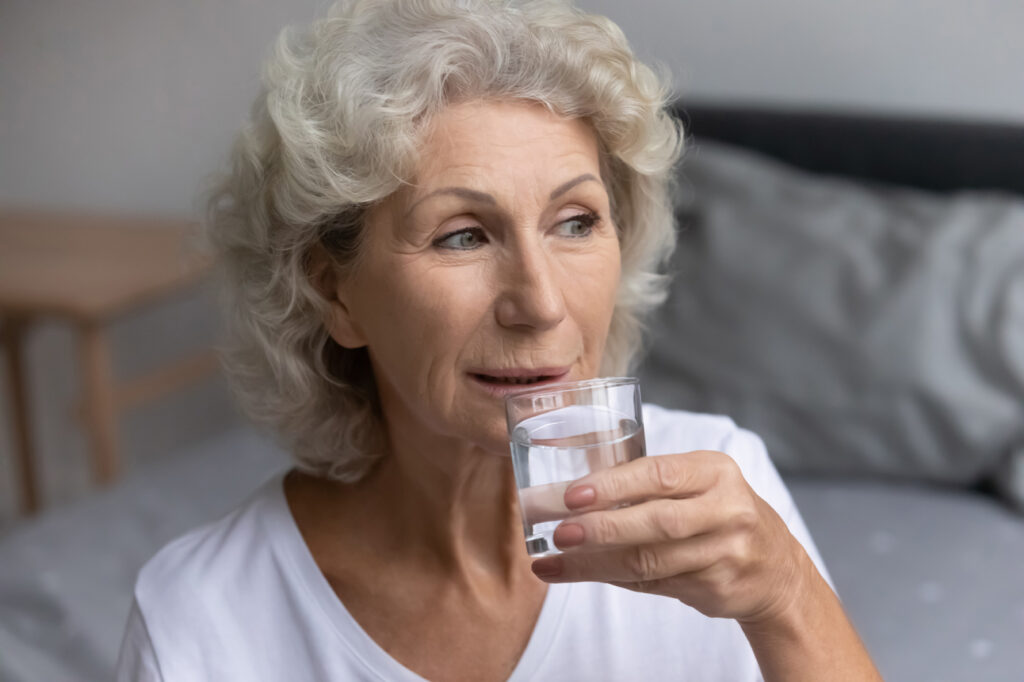Wrinkles, gray hair and stiff joints are some of the most noticeable changes people experience as they get older. But did you know bladder elasticity naturally decreases as well? The bladder walls and pelvic floor may also weaken. When this happens, your bladder is unable to stretch to accommodate bigger amounts of urine, which means more bathroom trips and potential bladder problems.
These changes are normal with age, but they can increase your risk of urinary tract infections (UTIs), lower urinary tract symptoms and even bladder cancer if you’re not careful.
How to prevent bladder infections
While you can’t reverse aging, there are some things you can do to keep your bladder healthy as you age:
- Stay hydrated
The sensation of thirst diminishes with age, as does the amount of water in your body. In fact, the amount of water in the body decreases by 20 percent by the age of 80. This puts you at a higher risk for not only dehydration but also bladder infections. It’s important to drink at least 6-8 eight-ounce glasses of water a day to stay properly hydrated and keep your urinary system (e.g., urethra, bladder and kidneys) healthy. - Make healthy lifestyle changes
Limit your consumption of alcohol and caffeine and avoid all tobacco products. These substances can irritate the bladder and leave you even more vulnerable to infection. - Eat whole foods
A healthy diet and regular physical activity not only helps you maintain a healthy weight but also helps you avoid constipation—a common cause of bladder problems in older adults. - Don’t wait
Don’t hold your urine when you have to go to the bathroom. If you don’t empty your bladder on a regular basis, the bacteria are more likely to sit and multiply in the bladder, which can lead to a UTI. - Go often
Visit the restroom about every two hours to flush away bacteria and lower your risk of infection—and for women, be sure to wipe front to back. - Don’t rush
If you are having trouble fully emptying your bladder, try counting to thirty once you’ve finished and then try to push again. - Change incontinence pads or briefs regularly
There is an increased risk of UTIs associated with using absorbent pads or briefs. In addition to changing your pads or briefs when they are wet, it’s important to change them at least six times per day to limit your exposure to bacteria. - Control your diabetes
Approximately 25 percent of adults aged 65 and older have diabetes, a disease that’s a result of having too much sugar in your blood. Diabetes can damage nerves around the bladder that help with control. - Consider topical cream (women only)
Postmenopausal women may benefit from low-dose vaginal cream to rejuvenate the vaginal skin and support the presence of good bacteria.
Signs of a bladder problem
One of the most important things you can do to protect your bladder is to understand the signs of infection and get it treated right away. Everyone’s bladder behaves a little differently and early symptoms may be subtler among older adults. This may be due to a slower or suppressed immune response, so be sure to get medical treatment as soon as possible to avoid complications. Here are the most signs and symptoms of bladder infections among older adults:
- Urethral burning with urination
- Pelvic pain
- Frequent urination
- An urgent need to urinate
- Fever
- Chills
- Urine with abnormal odor
Other UTI symptoms may include:
- Incontinence
- Agitation
- Lethargy
- Falls
- Urinary retention
- Decreased mobility
- Decreased appetite
Maintaining bladder health for older adults is important to maintain and support their overall quality of life. If you or a loved one is struggling with the pain and discomfort often associated with UTIs or how to prevent bladder infections, don’t be embarrassed. Visit Thibodaux Regional Urgent Care – Houma for expert bladder care and relief. We’re open for walk-in treatment seven days a week, from 9:00 a.m. – 8:00 p.m.




